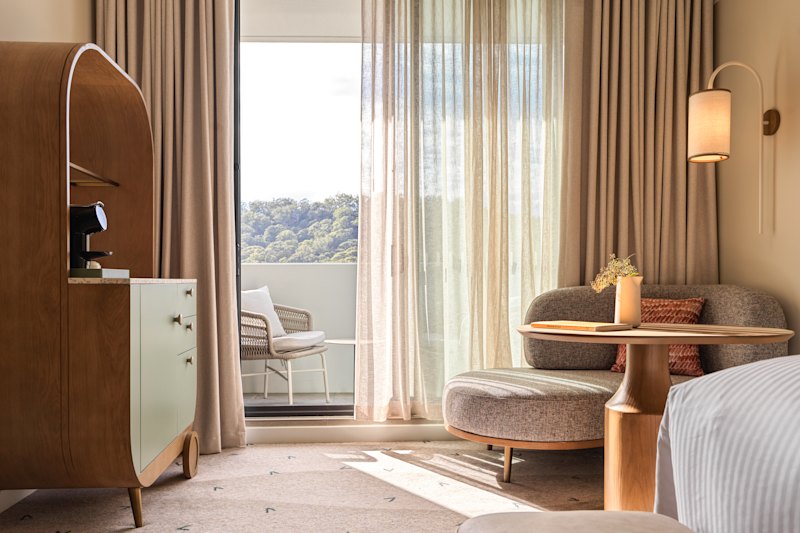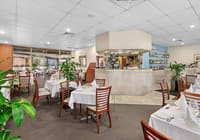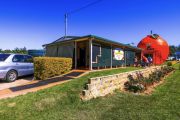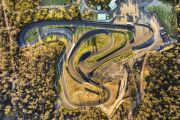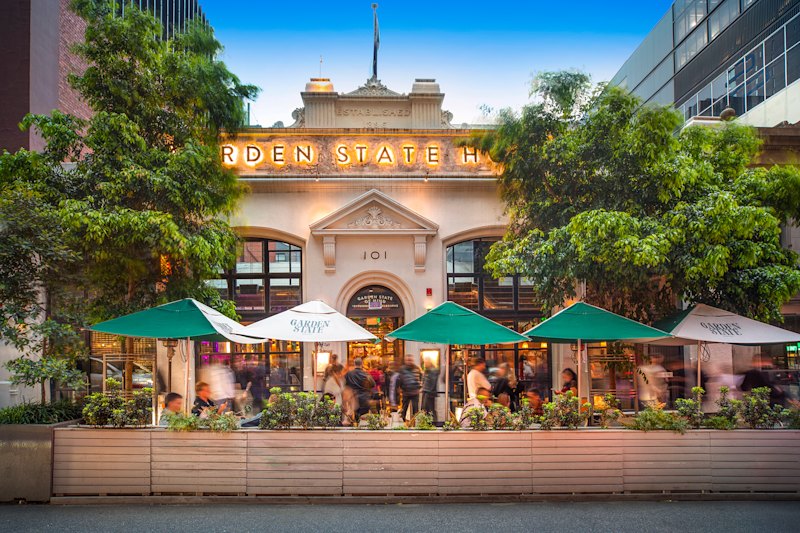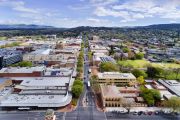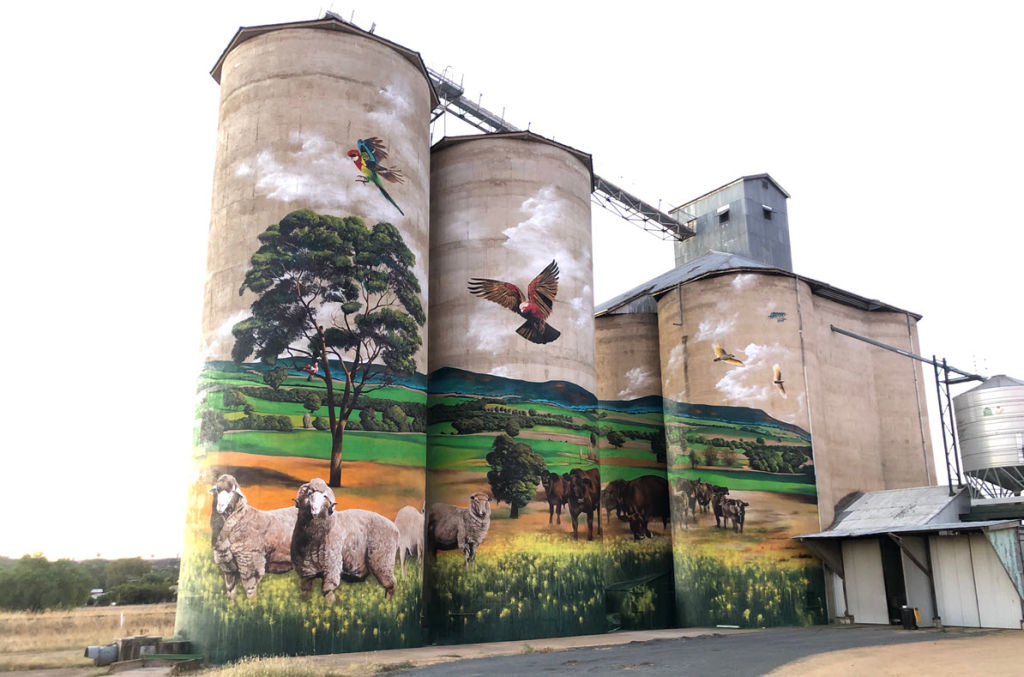
Grenfell is the latest rural town to join the Silo Art Trail with mural by Melbourne artist Heesco
Cat Woods
The town of Grenfell, in the NSW central west, has become the latest outpost of a growing rural art movement that features giant works on the sides of silos, and which are proving to be a magnet for tourists.
One of Melbourne’s most well-known street artists, Heesco Khosnaran, transformed the silos at Grenfell – about 400 kilometres west of Sydney – with an enormous mural featuring lush green grass, grazing sheep and whirling birds.
It’s the 26th site in what’s become known as the Silo Art Trail, a project that has seen international and local mural artists transform these functional rural buildings into a living representation of country life.
The concept began in the Victorian town of Brim in 2016, with the Brim Active Community Group, GrainCorp and street art agency Juddy Roller combining forces to commission artist Guido van Helten to paint powerful images of local farmers.
The resulting international media attention and the influx of tourists to the region encouraged an expansion into a 200-kilometre-long outdoor art gallery of silos stretching from the Victorian towns Rupanyup to Patchewollock, through Brim, Lascelles, Rosebery and Sheep Hills. Grain Corp donated the silos, while funding came from Australian and Victorian governments, with the assistance of Yarriambiack Shire Council.
It has since expanded into South Australia, NSW, Western Australia and Queensland.
Heesco’s work in Grenfell was commissioned by the owners of Grenfell Commodities, on whose land the silos are located. About 500 cans of spraypaint, five weeks and 130 litres of acrylic paint went into Heesco’s mural depicting the Weddin Shire.
“These kind of monumental artworks should reflect the sentiments of the local community, as it becomes a major point of attraction, and point of pride for the towns,” Heesco said.
Another street artist Jimmy DVate worked on three silos in 2018. The first in Goorambat, the second in Rochester (both in Victoria) and the third in Waikerie, South Australia.
He said there were many logistical challenges to painting these buildings.
“Painting a curved surface is a real challenge compared to the usual wall and definitely takes a while to get your head around,” DVate said.
“The weather is also a major factor especially as most of these towns are in really extreme environments. In summer you have the heat, then in winter the silo can freeze overnight so you have to wait for it to thaw before you start. The wind is probably the hardest to deal with in these exposed locations. It does weird things around a silo shape and really effects working at heights and using spray paint.”
For both DVate and Heesco, the lifelong friendships with the regional communities they’ve worked collaboratively with, and the ongoing benefits for tourism in these regions, has more than justified the winds, heat and frozen silos.
“It means a great deal to regional communities to have something this scale done,” Heesco said.
“It instantly becomes a tourist attraction, a landmark, and talking point in that whole area, and has a trickle down effect for the local economy through small businesses. Overall, it’s just such a positive thing to do in these communities, especially when they’re going through harsh droughts.”




